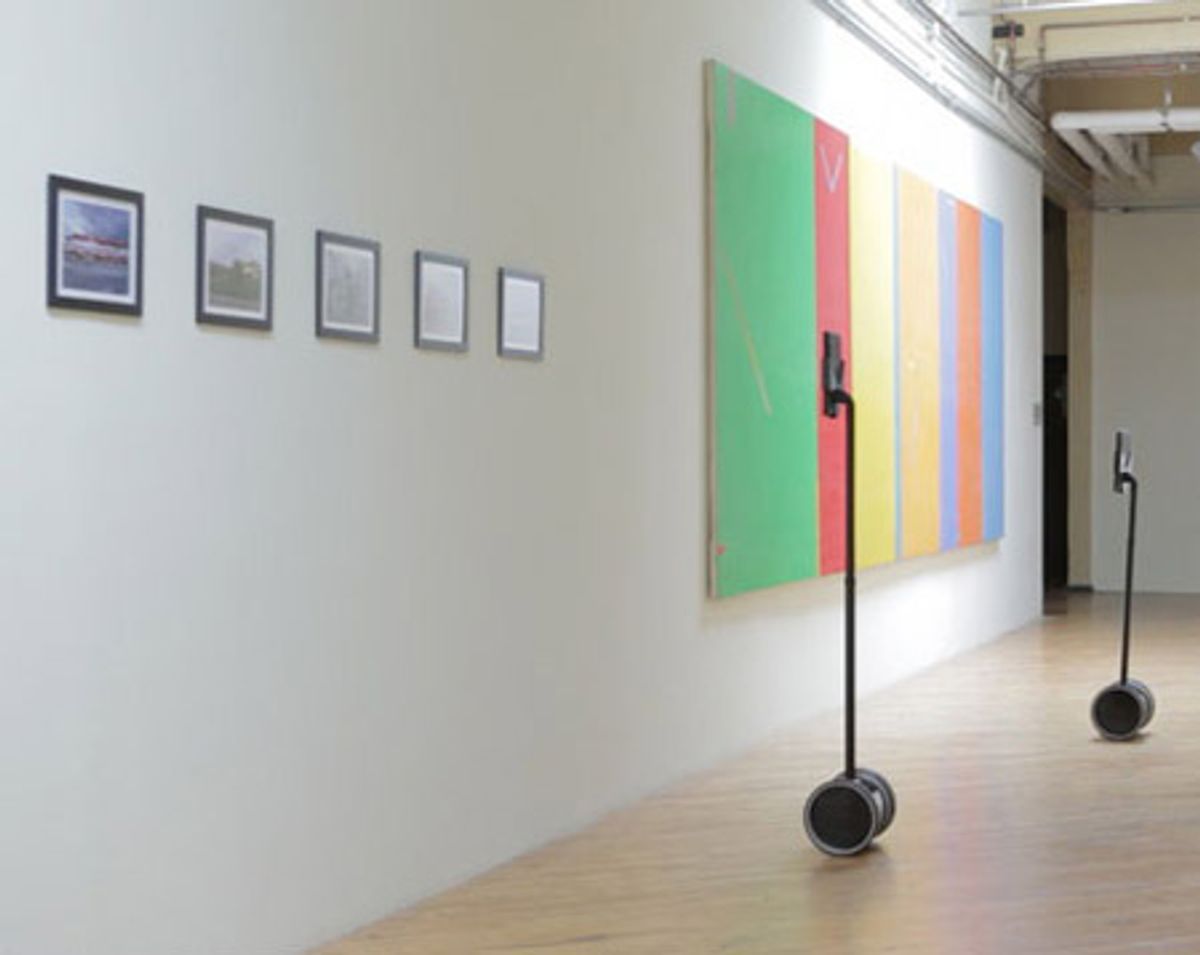Doing robotic telepresence is tricky. It's one of those things that sounds good on paper (you can virtually be anywhere, whee!), but when it comes to getting people to plunk down a pile of cash for the hardware, going commercial with the concept has proven to be more or less impossible outside of some very specific circumstances. Double Robotics, a startup out of Y Combinator, is taking a shot at the telepresence space with a slick new iPad-based platform called Double.
When we say that Double is "iPad-based," it's literal: Double is pretty much just a mobile base for an iPad. You can log into the iPad from any computer or iOS device, and drive the robot around while streaming two-way audio and video lets you talk to people, go sightseeing, or do whatever else you want while remotely inhabiting the body of a robot. The iPad can be extended vertically from three and a half to five feet to maintain eye level with people sitting or standing, and the Segway-style base uses high-efficiency motors to zip around for up to eight hours on a charge. It's a looker, too, with a futuristic, minimalist design, and the best part (they very best part) is the shockingly low preorder price of $2,000 (iPad sold separately).
Based on the experience that we've had with telepresence robots, there are a couple things that we tend to look for. Big, head-sized screens at head height are very nice, because it makes the communication two way: otherwise, all the people on the other end are talking to a robot, and not to you. The navigation UI is also important: driving robots remotely can be tricky, and our best experiences have come from robots with dedicated navigation cameras. We like remote charging bases, because it gives the user independence from humans on the other end. High quality, high bandwidth, low latency connections are crucial (although arguably that's not the department of the robot). And finally, the robot has to be cheap enough that it makes more sense to use it than to hire a minion to walk around holding a laptop running Skype.
At first glance (and this really is just our first glance), Double hits several of these sweet spots, the most important of which is the price. The robot is also leveraging the iPad as much as possible, which is a good idea, if a bit risky. It's a good idea because it's a way to effectively offload a bunch of the trickiest and most expensive pieces of your robot on someone else (who will keep making them better so that you don't have to), and it's risky because that someone else (Apple, in this case) doesn't give a hoot that you're using their hardware on your robot, meaning that they're going to be designing and optimizing for their users, not yours.
It seems like Double has a good chance of commercial success in a very, very tough market. We've long been skeptical of the viability of telepresence robots that cost as much as a car, and the super cheap and tiny ones that have started popping up, as cool as they are for hobbyists, are more like novelties than really useful tools. For just $2,000, though, we're looking forward to seeing more on the Double. And hey, they're our neighbors out here in Silicon Valley, so maybe we will!
In sort of related news, we also heard this week that Suitable Technologies (who have been working to commercialize Willow Garage's Texai telepresence platform) will be making some sort of announcement 42 days from now. At this rate, combative telepresence is going to need to be a RoboGames event.
[ Double Robotics ]
Evan Ackerman is a senior editor at IEEE Spectrum. Since 2007, he has written over 6,000 articles on robotics and technology. He has a degree in Martian geology and is excellent at playing bagpipes.



